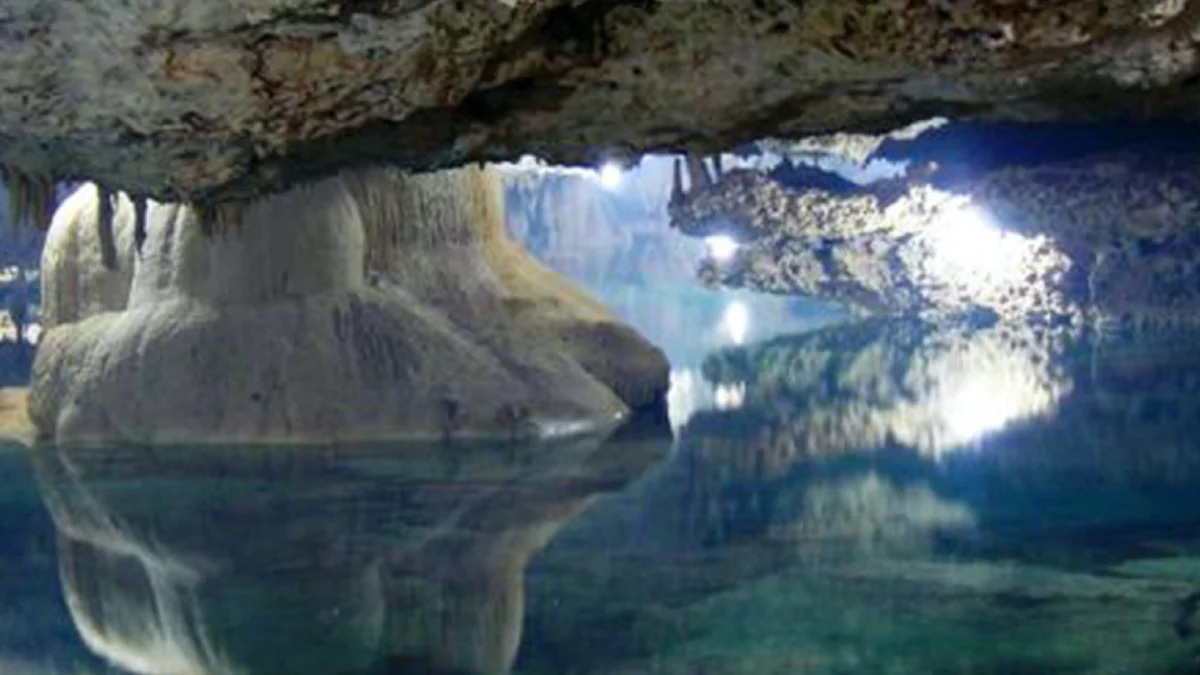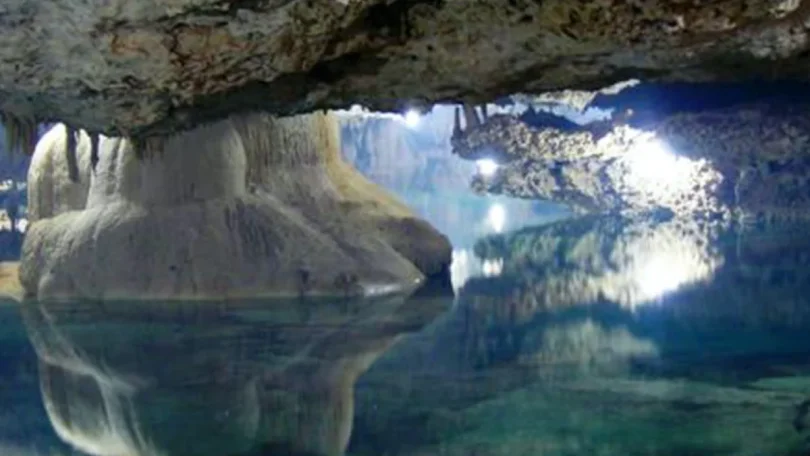Imagine a hidden ocean, so gigantic in size that it is beyond imagination. This is precisely what a team of scientists discovered, hidden 700 kilometers below the surface of our planet. This extraordinary find could revolutionize our understanding of the origin of water on Earth and raise exciting new questions about how our world works.
ADVERTISEMENT
The researchers behind the discovery, led by Steven Jacobsen of Northwestern University in Illinois, used innovative methods to probe the depths of the Earth. Their results, published recently, have had a bombshell effect in the scientific community and are already sparking numerous discussions on the potential implications of this underground ocean.
The underground ocean discovered by the team of researchers is of staggering size. According to their estimates, it would contain a quantity of water three times greater than that of all the surface oceans combined. Located at a dizzying depth of 700 kilometers, this ocean is trapped in a blue rock called ringwoodite, which is part of the Earth's mantle.
ADVERTISEMENT

The presence of this immense reservoir of water raises fascinating questions about the origin of water on our planet. Until now, there were two main theories: one suggesting that the water came from the impact of comets, the other proposing that it had slowly seeped from inside the Earth. The discovery of this underground ocean seems to give weight to the second hypothesis, as Steven Jacobsen explains: “It is tangible proof that water on Earth came from the interior.”
ADVERTISEMENT
To achieve this remarkable discovery, the researchers used an ingenious approach. They deployed a vast network of more than 2,000 seismographs across the United States, aiming to study seismic waves generated by more than 500 earthquakes.
Seismic waves, which propagate through the Earth's interior, including the core, can be detected at the surface. By carefully analyzing the speed of these waves as a function of depth, scientists were able to determine the types of rocks they passed through. This is how they spotted this underground ocean: the seismic waves slowed significantly as they passed through the wet ringwoodite. As Steven Jacobsen explains, “It's a layer of rock with water along the ridges between the grains, almost like they're sweating.”
ADVERTISEMENT
The discovery of this underground ocean sheds new light on theories concerning the origin of water on our planet. Until now, two main hypotheses clashed. The first suggested that the water came from the impact of ice-rich comets on the early Earth. The second proposed that water had slowly seeped from the Earth's interior over geological time.
The results of Steven Jacobsen's team seem to favor the second hypothesis. As he explains, “This is tangible proof that water on Earth came from within.” This discovery could therefore call into question the theory of the impact of comets and open up new exciting avenues of research into the history of our planet.
ADVERTISEMENT
Beyond its importance for understanding the origin of water on Earth, this underground ocean could also play a crucial role in maintaining ocean levels over time. According to Steven Jacobsen, this hidden water could contribute to the remarkable stability of ocean volume over millions of years.

ADVERTISEMENT
“We should rejoice at the presence of this reservoir,” underlines the researcher. “If it were not there, it would be on the surface of the Earth and the mountain peaks would be the only visible land.” This declaration highlights the importance of this underground ocean for the balance of our planet and the presence of emerged land.
The discovery of this underground ocean opens up many exciting research perspectives. The researchers now plan to collect additional seismic data on a global scale to determine whether the presence of water in the mantle is a common phenomenon or not.
ADVERTISEMENT
These results could provide a better understanding of the water cycle on Earth, from its origin to its current distribution. They could also shed new light on the dynamics of tectonic plates and the interactions between the mantle and the surface of our planet.
The discovery of a gigantic ocean 700 kilometers below the Earth's surface is a major scientific breakthrough that raises many fascinating questions. It puts our knowledge of the origin of water on our planet into perspective and opens up exciting new avenues of research.
ADVERTISEMENT
This discovery also highlights the crucial importance of scientific research to better understand how our world works. Through innovative methods and careful data analysis, researchers are unlocking Earth's deepest mysteries and revolutionizing our understanding of the planet we inhabit.
There is no doubt that this discovery will spark numerous debates and inspire new research in the years to come. It bears witness to the beauty and complexity of our planet, while reminding us of the importance of continuing to explore and understand the wonders hidden beneath our feet.
ADVERTISEMENT


